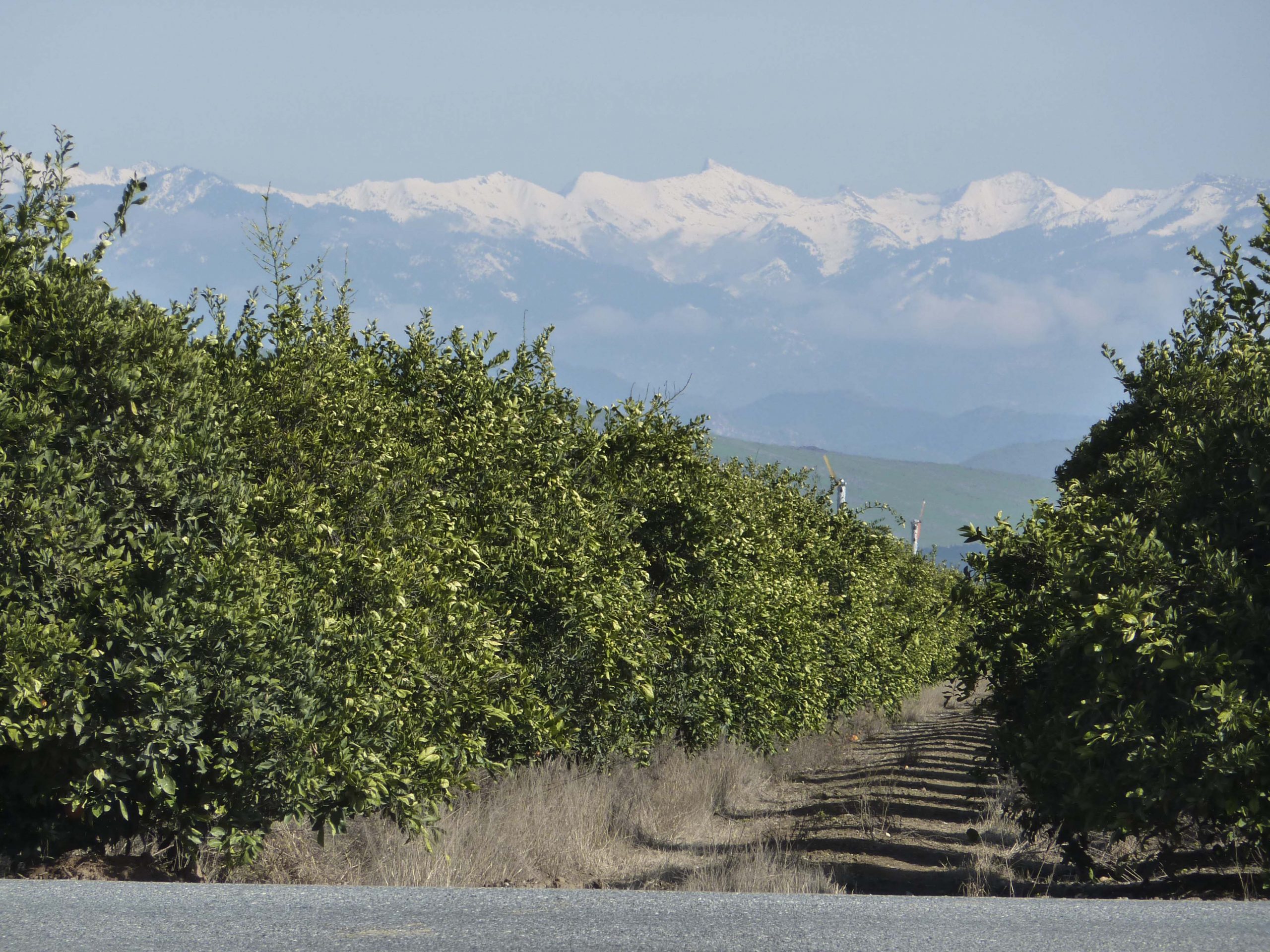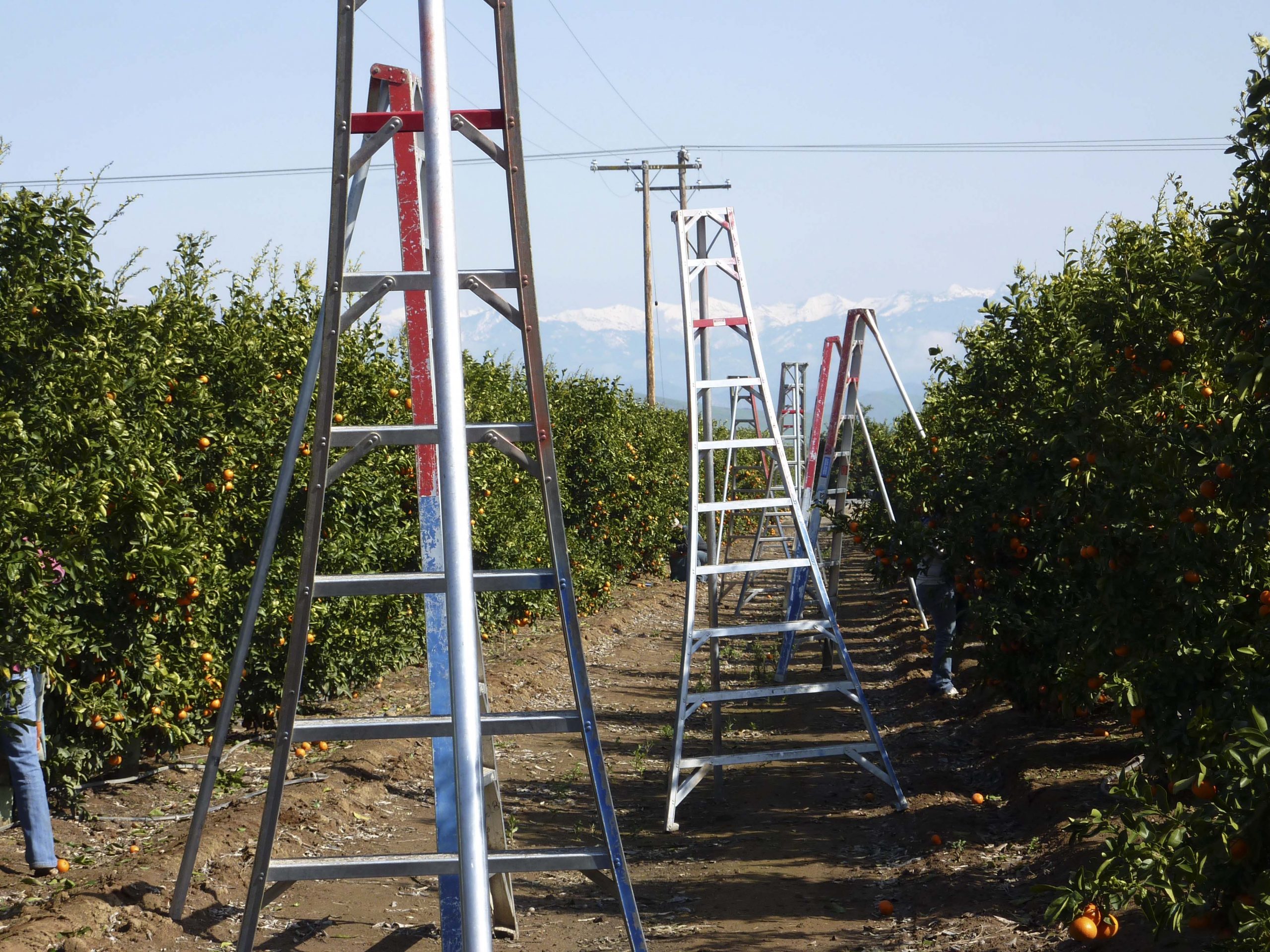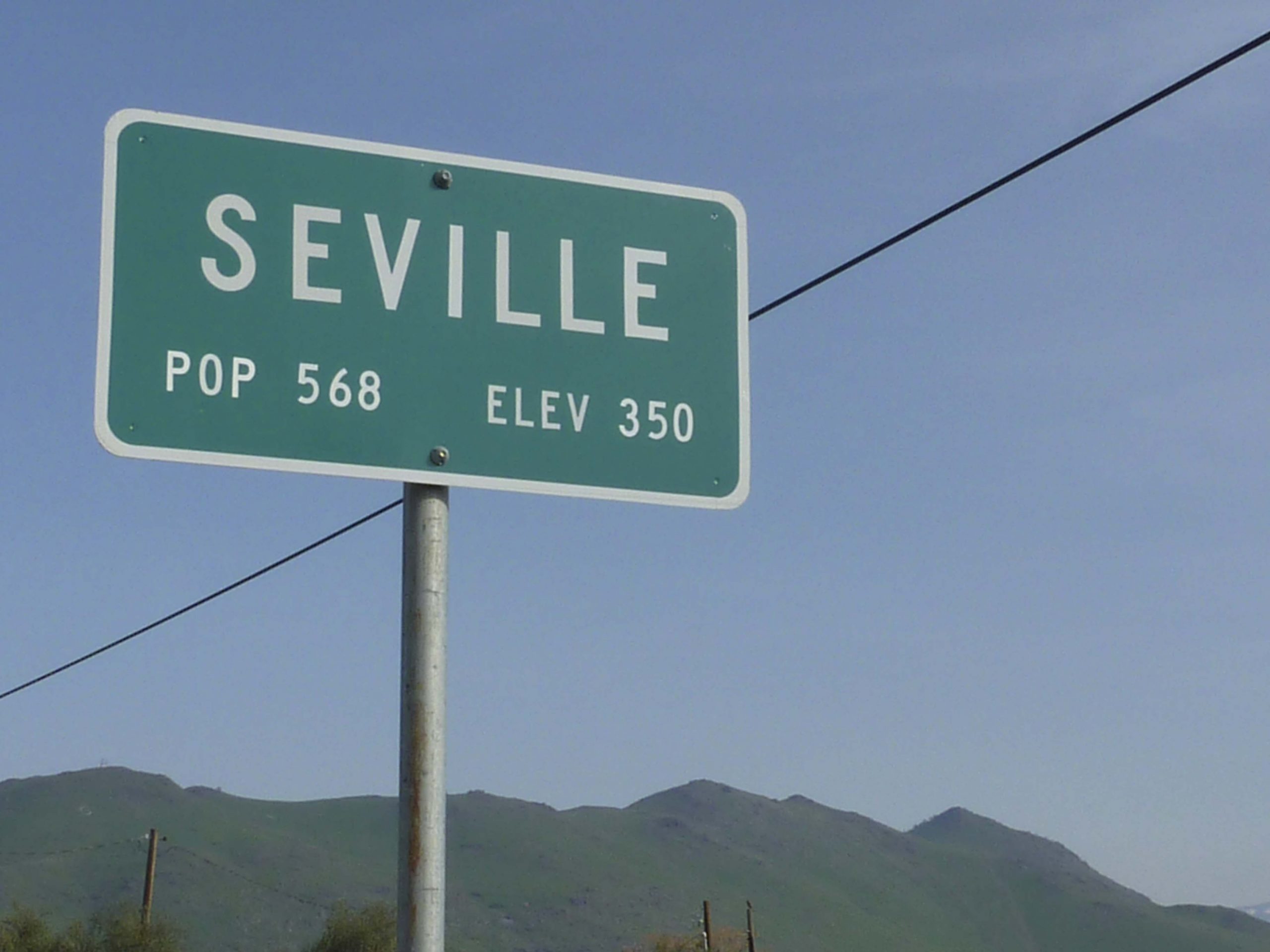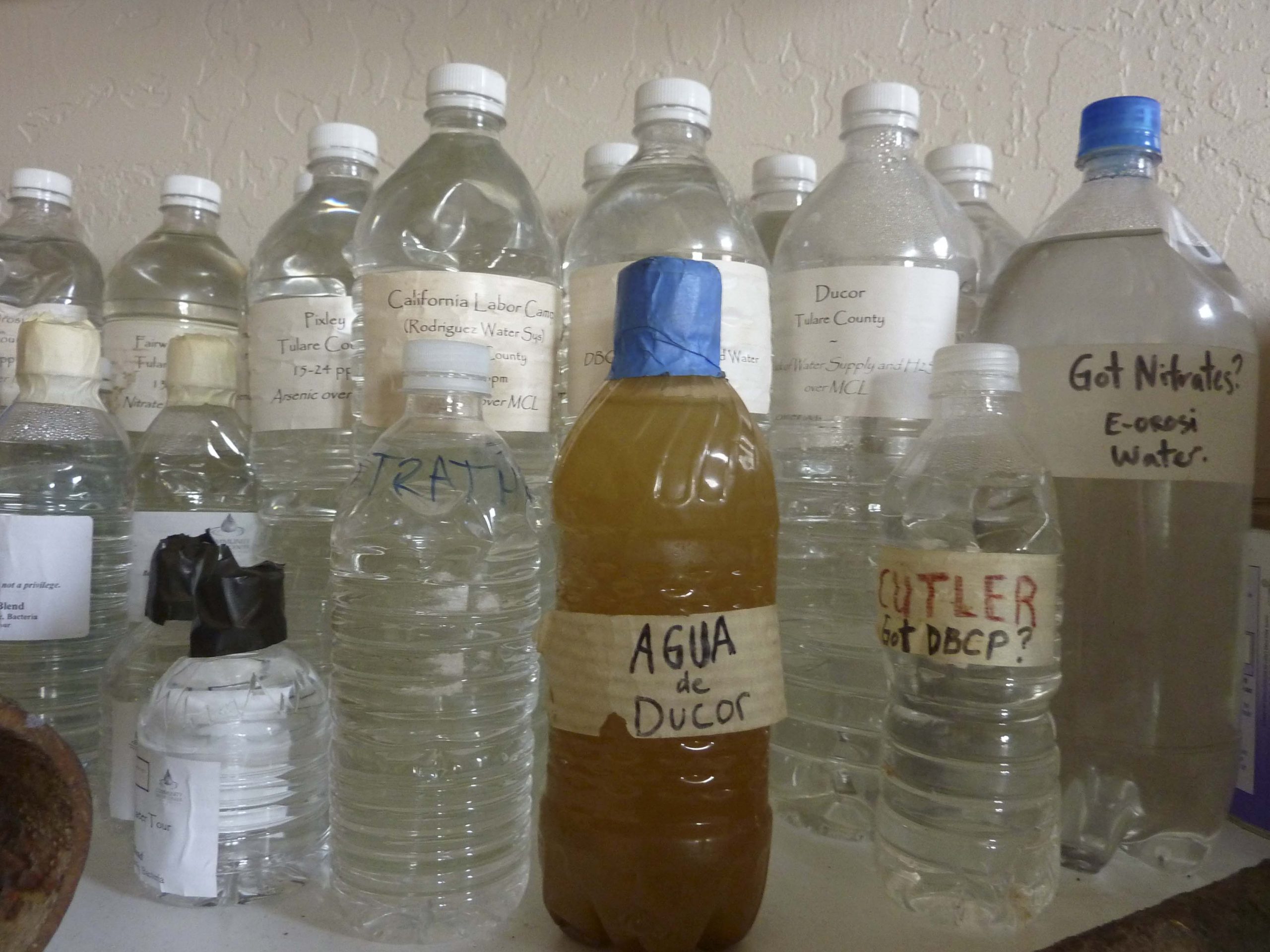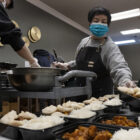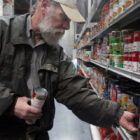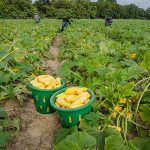SEVILLE, Tulare County — One of the perks of living in the Bay Area is the wide variety of fresh, local produce we enjoy year-round. Much of that comes thanks to our proximity to the Central Valley, one of the most productive agricultural regions the world has ever seen.
Unfortunately, this luxury comes at a price, although we aren’t the ones paying it.
California’s Central Valley produces $13 billion worth of food products annually, according to the American Farmland Trust. But this bounty has brought water pollution, which disproportionally affects the poor people who grow and harvest our food.
Set on the valley floor against a backdrop of the Sierra Nevada, the town of Seville has been home to farm workers for four generations. About 500 people live here, and most of the adults work in the fields. It’s February, time for the orange harvest. Before work begins, men and women gather on a dirt road between orchards. They’re chatting, snacking and playing an impromptu game of soccer.
When it’s time to work, these folks are all hustle. They wear baskets on their fronts and move deep into each tree, rustling branches as they pick. When their baskets are full, they run to large collection boxes, where they dump the produce and clip off leaves and sharp stems. It’s hard work.
But these same fields that provide small communities with their livelihoods are also polluting their drinking water. Fertilizer and pesticide runoff from irrigated fields along with animal waste from nearby dairy farms percolate down into the groundwater, tainting their wells. Laurel Firestone is co-executive director of the Community Water Center, a San Joaquin Valley organization that works with low-income, primarily Latino communities.
“We believe that clean water is a human right, and not a privilege,” Firestone said. “Our poorest communities are unable to get clean water.”
Different towns have different contaminants, but one of the most widespread is nitrates, caused by excess nitrogen fertilizer that crops are unable to absorb. According to the Pacific Institute, a water research organization, more than 1.3 million people in the San Joaquin Valley, mostly in poor farming communities, can’t drink their water due to nitrate contamination.
“Nitrate is an acute contaminant, which means it can affect a person in a matter of days, rather than years,” Firestone said. She said the most common health impact from nitrate contamination is blue baby syndrome: “Blue baby syndrome is where infants less than six months or pregnant women can’t absorb the oxygen in their blood and can literally suffocate and die. Other impacts include spleen and kidney disease. Short-term impacts include stomach and diarrhea problems, and some studies have linked nitrate to cancer.”
Agriculture exempt from rules
For most Americans, municipal water systems eliminated health problems associated with tainted water about 100 years ago. But many rural Americans still rely on wells, and groundwater isn’t as clean as it used to be. That’s partly because, since it was passed in 1972, the federal Clean Water Act has exempted agriculture from regulation. California has its own clean water law, but it doesn’t cover pollution from agriculture either.
In 2000, the state required a review of agricultural practices, and the Central Valley regional water board now requires farmers to monitor surface water to make sure it’s not polluted. But agricultural practices haven’t changed much since then, and the requirement doesn’t apply to groundwater.
“There are still discharges from these activities, many of which would not be legally pollution,” said Ken Landau, assistant executive officer with the Central Valley regional water board. “But there are still water quality problems. We are in the process of identifying those problems, developing corrective action and implementing them.”
Rules that govern one of the state’s biggest industries tend to change slowly. But Landau said the board is responding to new science that can identify smaller elements of pollutants. And he expects new groundwater regulations by 2011.
But any new rules will take much longer to help the people of Seville and other valley towns because nitrates linger in groundwater for decades.
Rebecca Quintana has lived in Seville all her life. But since the Community Water Center tested the town’s water in 2008 and found the high levels of nitrates, she has used piped water only for bathing and flushing toilets.
“We buy our water at the market,” Quintana said. “I spend about $50 a month. And then our monthly bill is $60. It comes out pretty expensive.”
Quintana is a member of the Betterment of Seville, a group working with the Community Water Center to find a new source of clean water for the entire community.
Spending too much on water
On payday in the orchards, men and women in work clothes stand at the edge of the grove, clustered around the supervisor as she reads out each name. Workers come forward to collect their checks, their payment based upon how many boxes they filled. But it would take more boxes than any human could fill to earn a comfortable living.
“The average family around here makes about $13,000 a year," said Maria Herrera, outreach coordinator for the Community Water Center. “Throughout the San Joaquin Valley, people are paying up to 10 percent of their income just to be able to provide safe water for their families.”
“That’s a big portion of a lot of people’s budget,” said Quintana. “And I would say, not everyone can afford it. So the people that can’t afford it just have to drink water from the tap that’s contaminated.”
Quintana estimates that more than half the people in Seville drink the tap water. Herrera says it’s a valley-wide problem.
“It’s almost, drink at your own risk, you know?” said Herrera. “Every time that they walk up to their tap, every time that they use it for cooking, they’re risking their health and their family.”
Betterment of Seville, Community Water Center and another local organization, Self Help Enterprises, are applying for government funding to dig a new well. But Karl Longley, a member of the water board and a professor at California State University, Fresno, said the new well could also be tainted.
“Seville and the area they’re located in may in fact find clean water — safe drinking water — with a second well,” Longley said. “But those wells are always like going to Las Vegas. It’s a gamble, and they’re costly.”
Longley says a more effective – but also more expensive – solution would be for Seville to partner with several neighboring towns to invest in a centralized treatment system that would clean the water and then distribute it to them.
Seville is going to try the new well first. But even if a law regulating groundwater quality is passed, securing clean water will likely take years of community effort.
“It frustrates me because I know that if people in Hollywood were facing water challenges, it wouldn’t take years for them to get solutions to their problem,” said Herrera. “I really believe that because it affects low-income communities who don’t have much of a voice, that is why there hasn’t been any solution to our problems.”
Listen to the story at KALW-News.
